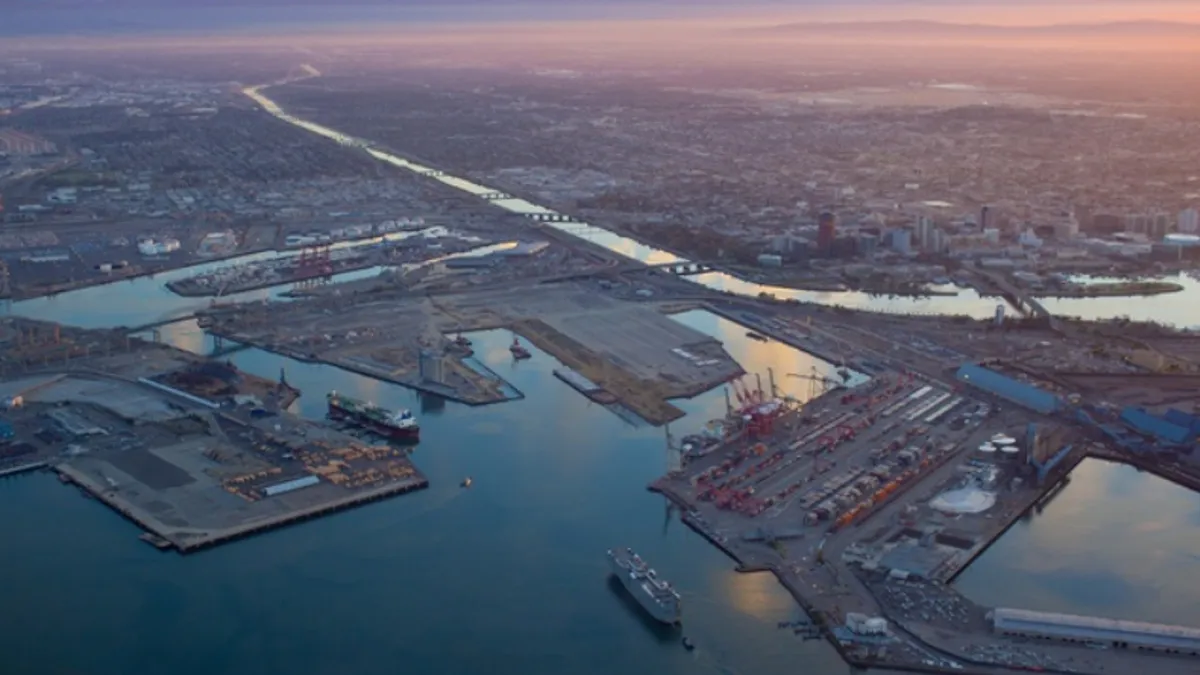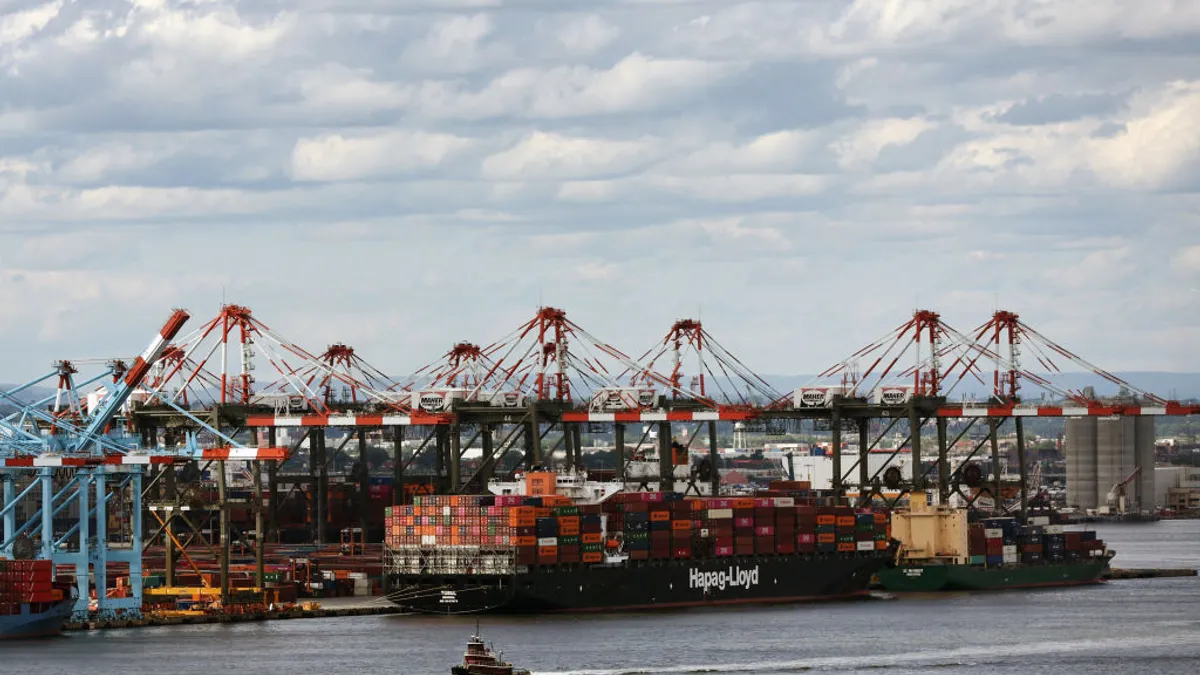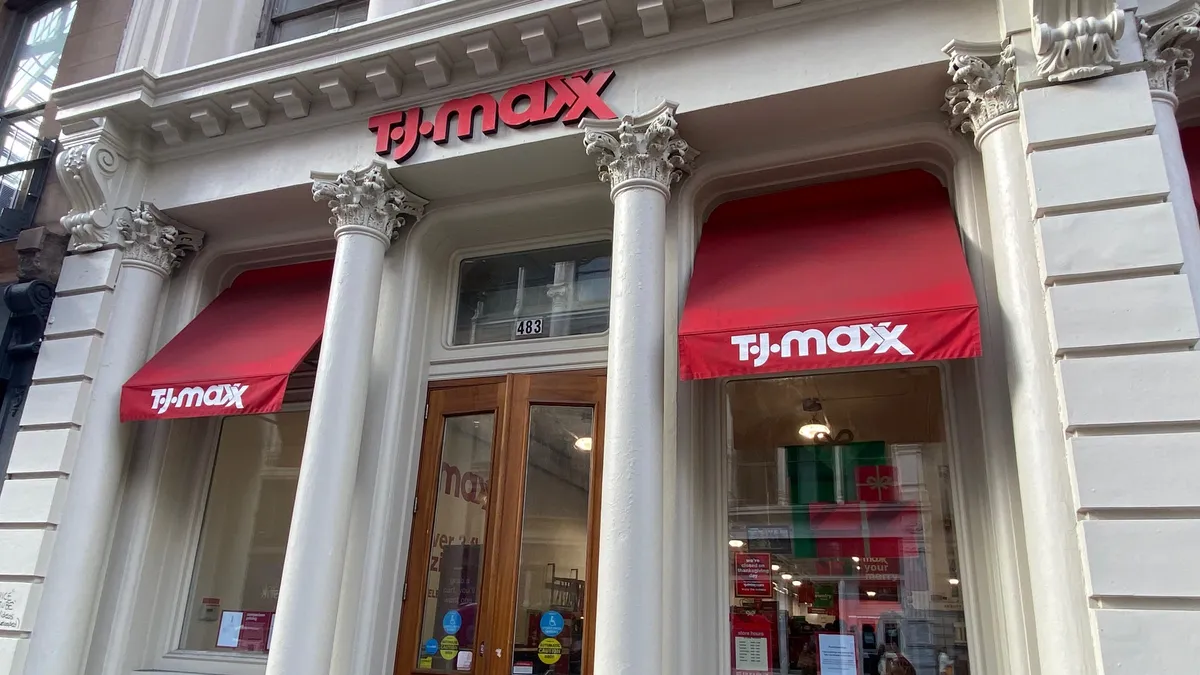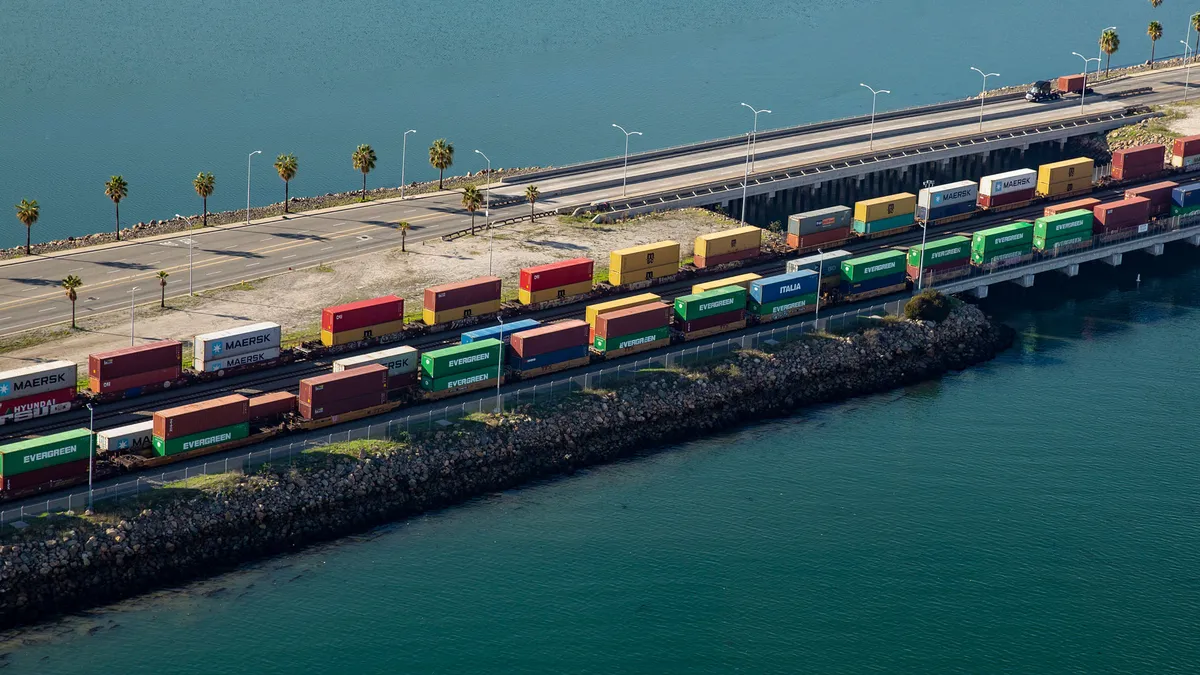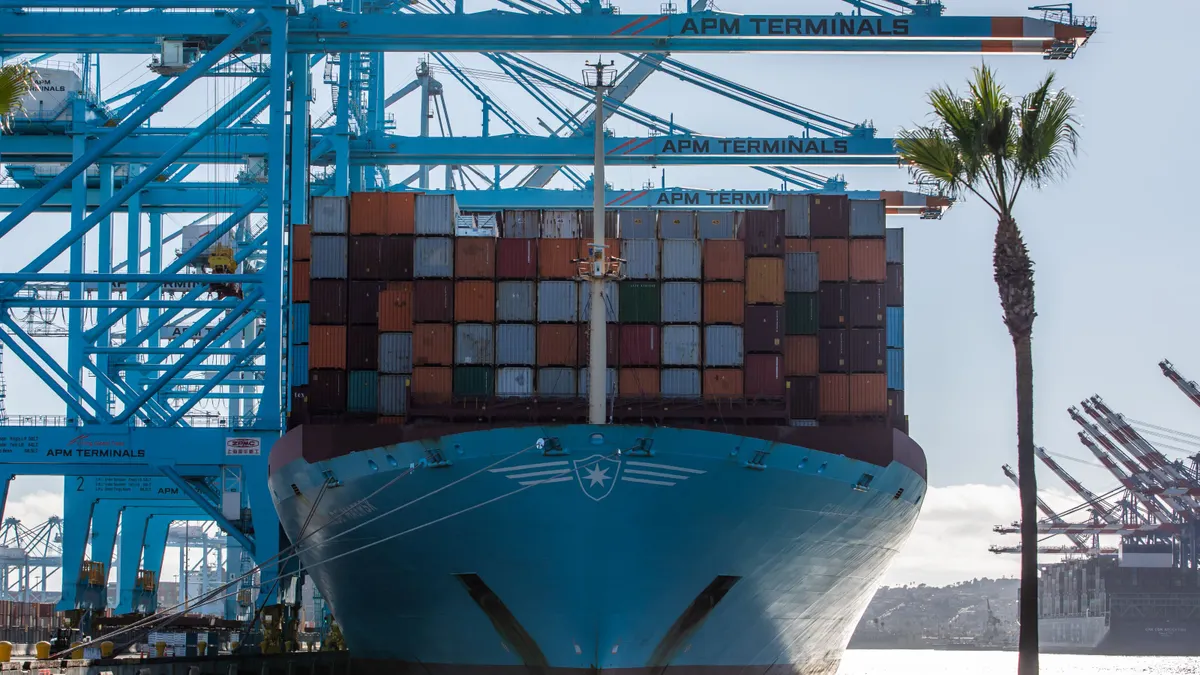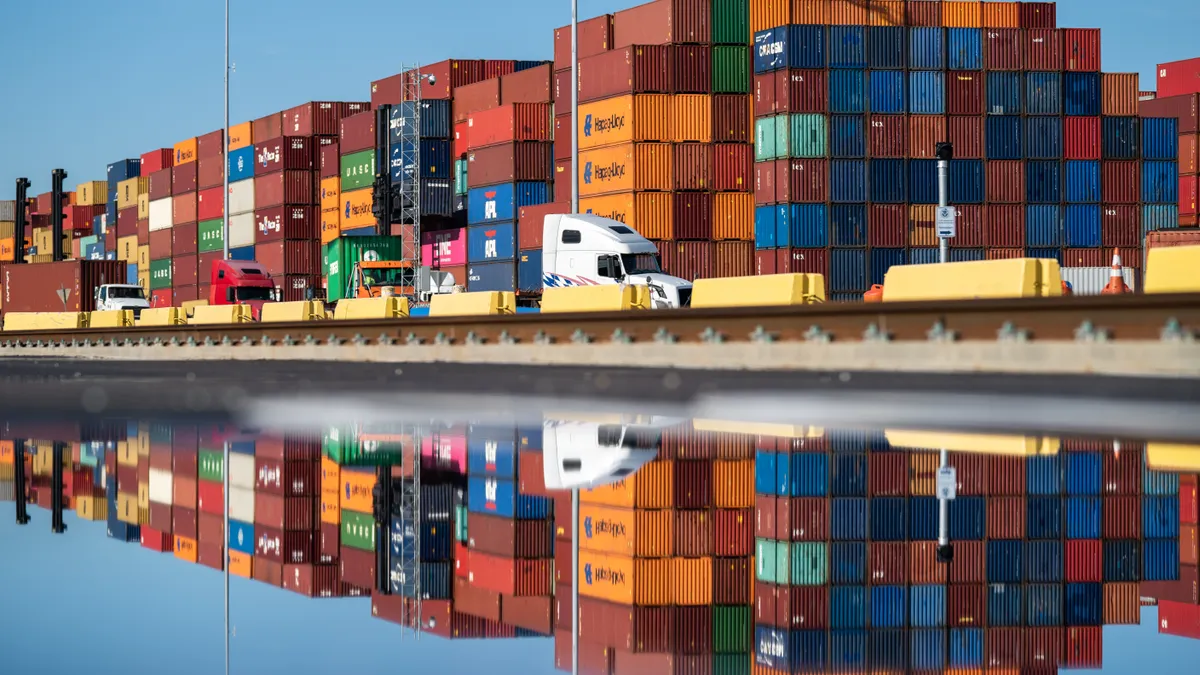In this digital age where people trade stocks, book flights and sign contracts electronically, the notion of checking cargo shipping rates by phone or email should be quaint. Yet, carriers have been slow to adopt digitization, forcing shippers and freight forwarders to wait days instead of seconds to determine rates and confirm vessel space.
The tides are turning, though, as three of the largest container lines, including Hapag-Lloyd, CMA CGM and Maersk, now offer instant quoting and booking through their websites, for at least some container types and lanes.
These three carriers are the only major container lines offering an instant quote tool. Several other large carriers offer electronic quote requests on their website, but responses aren’t instant. Many others have no capacity for electronic quoting.
"The fact that enough larger players have done it, I believe makes it table stakes," said Eytan Buchman, chief marketing officer at Freightos, a digital marketplace for shipping and freight forwarding. He sees the move toward carrier digitization as a steady walk, not a run, but "soon any company that doesn’t have digital quoting and booking will find themselves feeling the crunch on the revenue side."
How instant quoting affects stakeholders
Shippers
Small and midsize shippers will be winners in the move to instant quotes. Larger shippers move 60% to 75% of shipments with locked-in rates in three- to 12-month contracts, said Nerijus Poskus, vice president and global head of ocean freight at Flexport, a digital freight forwarding operating system for global trade. Those using the spot market or with varying supply chain needs will benefit from instant quotes.
Those shipping in smaller lanes can, at least in the short term, benefit as well. The China to U.S. market is commoditized. "Everybody knows the price, for the most part," Poskus told Supply Chain Dive.
With the smaller lanes, shippers don’t know the going rates. The large freight forwarders can take advantage of that lack of transparency if they know no one else is giving a price because it’s a small lane. "Now others can access the market, and that will benefit the shippers," he said. "They should expect to pay less on smaller, less visible lanes."
With instant access to rates, shippers can more easily and quickly price their goods when on a sales call. "When planning the supply chain out, you can figure out the fully landed cost of goods and when it will get to a customer," Buchman told Supply Chain Dive.
Instant booking also simplifies the workflow for shippers. Maersk notes its offline process contains 13 steps including communication and paperwork. Using instant booking decreases that to five online steps. With instant booking, carriers like Maersk are offering additional perks. Maersk Spot guarantees loading within three days of the estimated departure time.
Carriers
Just as shippers benefit from visibility in a small lane, carriers have a chance to benefit as well. Carriers digitizing lanes where technology is lacking can be early or even first on the market. "If I’m putting a platform live in Africa, that’s a significant differentiator," said Graham Parker, CEO of Kontainers, which offers freight forwarding software. Those with digital offerings covering the Pacific or Atlantic lanes will already have competition.
Carriers also have a "once in a generation event for them to capture market back from freight forwarders using digital means," Parker told Supply Chain Dive.
Freight forwarders
As one of the largest business sources for carriers, instant quoting is a big deal for freight forwarders. "They already have some digital tools for direct booking, but this will make it more acceptable and easier," Buchman said. In addition to time savings, there’s a potential reduction in shipping prices, as they can more easily compare prices by shopping around. "They can ship more intelligently," adding more carriers into the rotation, Buchman said.
Those in the industry compare freight forwarders to travel agencies, like Expedia for freight. Just like in airline travel, freight forwarders will look at a variety of factors including pricing and transit time to make decisions.
Freight forwarders: It’s time to change
As a result of larger carriers implementing instant quoting, some shippers and freight forwarders are being pushed to digitize their own operations. Hapag-Lloyd penalizes customers $50 per transaction for booking on the phone or via email.
Shifting workplace demographics, where Millennials comprise a growing share of the U.S. workforce, are also driving digital change. "They’re growing up with apps," Parker said. "When they come across a freight forwarder offering digital, they will go with it — they know the value."
Large freight forwarders like Agility added instant quotes for their customers last year, and Kuehne + Nagel added them in April. With so much volume controlled by freight forwarders, the digital opportunities are immense. "Freight forwarders have a real opportunity to get value added before the shipping lines can do it," Parker said. Some freight forwarders are going all in with digitization, he said, with companies like C.H. Robinson investing $1 billion in technology in the next five years.
Forwarders who manually quote take 57 hours on average per quote from client query to quote provision, according to Freightos' 2018 Customer-Centric Freight online freight sales survey. Freightos sent queries to the top 20 freight forwarders for the study. The shortest time for manual quoting was 23 hours, and the longest was 141 hours. The survey found 15 of the 20 forwarders had an online contact form. Six of those were general forms that did not ask for enough information for accurate quoting, and four were generic inquiry forms. The five without an online contact form offered an email address.
Relying on phone calls and emails in the supply chain — not just in booking — costs U.K. businesses $2 billion (USD) annually in lost time, according to a Zencargo study.
"Soon any company that doesn’t have digital quoting and booking will find themselves feeling the crunch on the revenue side."

Eytan Buchman
Chief Marketing Officer, Freightos
As pricing becomes more accessible and easier to book directly with carriers, freight forwarders are under the gun to provide value. "They can’t just mark up their service 14% and pass it on to the customer. They have to make sure they’re providing significant service," Buchman said.
Freight forwarding service should be more than just managing a container shipped from port to port. The forwarder should provide insights into how many containers to order based on inventory and whether the shipper should ship Full Container Loads or Less Than Container Loads. Instead of customers telling the forwarder what they need, the forwarder should advise about different modes of transportation. "It’s almost an extended arm for supply chain, a consultant to them," Poskus said.
In the future, freight forwarder customer service won’t necessarily mean being available by phone at any time, Buchman said. It could be visibility into tracking or online support.
Instant quoting is only the first step
As pricing becomes more transparent, those who succeed will spend less time chasing prices and more time creating innovative solutions for shippers. Instant quoting is a barometer that tells customers how automated a company’s rate management is, how digitally savvy the business is and how forward-thinking the company is, Buchman said.
While instant quoting and booking is taking hold among the major cargo carriers, the next step is for carriers and forwarders to offer dynamic real-time pricing, like the airlines. That could help fill up capacity and maximize sales, and be done in an automated fashion, Buchman said.
Automation through instant quotes and dynamic pricing is the first step in providing better service, but that should be followed by better marketing. After forwarders provide instant quotes, for example, the forwarder should follow up with several automated sales emails over time. That’s when people tend to convert into buying customers, Buchman said. That automated sales technology has been available for more than a decade.
"The industry is moving online," Parker said. "We’re past the point of no return."






